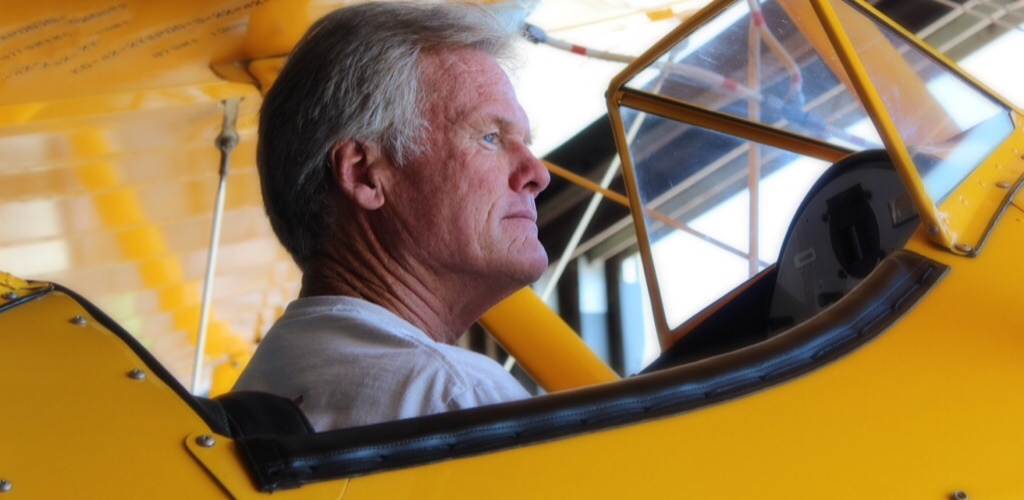Story By: Silvik Hagopian
Aviation has come a long way since the Wright brothers first took flight. Though now incorporated into the cycle of modern day life, few can say they’ve flown or been in an open cockpit biplane. Not chafing away the raw experience of flying, there’s something different about seeing the world 360 degrees openly; feeling the wind rush by, and hitting your face as you slowly get away from everything down on land.
“I don’t even think most of us are aware of it. As you’re getting ready to fly, and getting the airplane ready, you don’t normally realize you’ve stopped thinking about everything else in life. You’re getting ready to fly. And as you lift up, you literally leave everything behind you on the earth as you lift up into the sky. And it’s a freedom like no other,” said Mike Hanson, a pilot of an open cockpit WWII biplane.


“Aviation is a world unto itself, and the open cockpit biplane is a world within a world. I guess the closest analogy I can use is it’s like a Harley with wings. When you’re driving in a car you put up the window, you’re in a closed cabin in a vehicle or car and you’re driving along and you can see everything, but the minute you get on a motorcycle, you’re in the environment, same with the open cock pit biplane. You’re in the sky, you can hear the wind and you’re part of the sky,” Hanson said.
“The closest freedom to that I know would be diving, free diving, underwater. It’s like its own world, a world within a world. So I like the freedom of flying.”
Hanson always had a young boyhood dream of flying but pursued it later on because life got in the way.
“At 39 years old a friend of mine, he had recently purchased this airplane, and it had gotten checked out in the Stearman. One day Frank said, ‘Mike, would you like to go for an airplane ride?’ and I said, ‘Sure, OK.’ I showed up not knowing what to expect, the hanger doors opened up. I looked at this airplane and I thought ‘Oh my goodness, what is this.’ We went for a very short ride. We were going to go to the beach, but there was a wall of fog. We had to make a U-turn and come back, and it was only 20 minutes. When I got out of the airplane it was as if every fiber of my being said ‘I have to know how to do this,’” Hanson said.
He enrolled in flying lessons, and so the joke is, it only took him 110 days and 20 years to learn how to fly.
Hanson considers himself the caretaker of the plane, rather than the owner.
“Frank and I had a friendship, a good friendship, and I thought it would go on for many years. And Frank unfortunately four years later found out he had kidney cancer and five months later he was gone.”
About a month before his friend died, they had a conversation.
“He knew he was dying. One of the things Frank said was, ‘Mike I hope to have my own wings where I’m going. Would you take care of this set of wings?’ So, from that time, January of ‘98 to now, I’ve been the caretaker of this treasured piece of aviation history. When reality set in, [my wife] and I asked ourselves, ‘Oh my goodness how do we keep something like this?’ And we started biplanefun.com, offering rides to people to help offset the cost of the airplane.”
“This airplane and nearly 10,000 like it were built by Boeing for the military during WWII. This was considered a primary trainer for the army and the navy, the army air core before the air force came into effect. So this airplane specifically has historical significance as a military trainer used in WWII.”
“For me and this airplane, my hope personally is to live to be a centurion, to live to be a 100. We will see, lofty goal. And I know some guys that are flying into their 80s, and I would like to fly into my 90s.”



